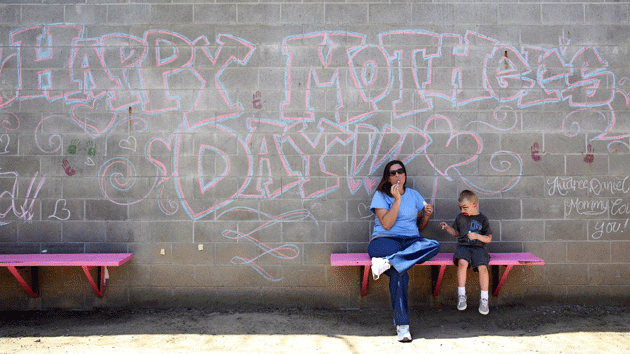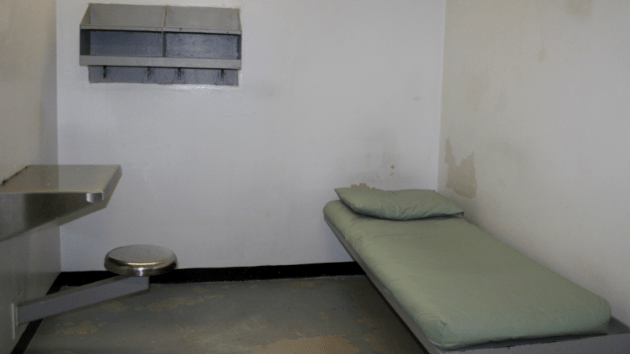There is a 16-year-old transgender girl in an adult prison in Connecticut right now. She isn’t there to serve a sentence. There are no charges against her. Still, she has been there for more than six weeks, with no indication of when she might be released.
Until last week, the girl, whom I’ll call Jane Doe because she is a juvenile, was in solitary confinement in the mental-health unit where, according to a letter she wrote, she cried in bed every night. She heard adult inmates crying, screaming, and banging on the walls. A guard observed her day and night, even when she showered or used the toilet. When other inmates caught sight of her, they yelled and made fun of her.
“I feel forgotten and thrown away,” she wrote to the governor of Connecticut from her solitary cell. “As you probably know, these feeling are not new for me. This is the way my life has been going since I was a little kid.”
The state became involved in Jane Doe’s life when she was five, according to her affidavit, because her father was incarcerated and her mom was using crack and heroin. She was born a boy; after she was placed in the care of her extended family, she said, one relative caught her playing with dolls and bashed her head into the wall. She said another relative raped her at age eight, as did others as she grew older. Doe would only allow herself to look like a girl in secret. Around age 11, a relative caught her in the bathroom wearing her dress and lipstick and slapped her, shouting, “You are a boy! What the fuck is wrong with you?”
At 12, the Connecticut Department of Children and Families (DCF) became her legal guardian. While in group homes, she says she was sexually assaulted by staffers, and at 15, she became a sex worker and was once locked up for weeks and forced to have sex with “customers” until she escaped. “I wanted to be a little kid again in my mother’s arms and all I wanted was someone to tell me they loved me, that everything would be alright, and that I will never have to live the way I was again.”
Here is how Jane Doe ended up in prison. On January 28, while living at a juvenile facility in Massachusetts—where she was serving a sentence for assault—she allegedly attacked a staff member, biting her, pulling her hair, and kicking her in the head. This kind of behavior wasn’t new for Doe. The director of the Connecticut Juvenile Training School, a correctional facility for boys, later testified in court that, since Doe was nine, police have been called 11 times while she was in state facilities. He said she sometimes smeared feces on herself. Another supervisor claimed Doe regularly “exhibited assaultive behaviors,” targeting female staff and other juveniles.
According to Doe’s lawyer, Aaron Romano, the most recent incident was sparked when a male staffer at the Massachusetts facility put Doe in a bear hug restraint from behind. “This is a girl who has been sexually abused,” Romano says. “She is inclined to interpret actions with that view.” DCF declined to comment on the incident, but the female staff member Doe allegedly attacked did not press charges. The male staffer has since been dismissed.
In order to move Doe to an adult prison, DCF cited an obscure statute that allows doing so when it is in the “best interest” of the child. Initially, the state sought to place Doe in a men’s prison, but her lawyers objected and she was sent to a women’s facility. There, she was placed in solitary confinement because under federal law, juveniles cannot be detained “in any institution in which they have contact with adult inmates.”
State officials have been well aware of Doe’s situation: In February, DCF commissioner Joette Katz cited her case—incorrectly claiming that she had broken a staff member’s jaw—when she asked the Connecticut Legislature for funds to open a new girls’ prison. She said it showed why high-security facility for juveniles was needed. The Legislature appropriated $2.6 million, and the facility has since been opened. But Doe, officials say, is too dangerous to be placed in that facility.
Abby Anderson, executive director of the Connecticut Juvenile Justice Alliance, says Doe’s incarceration is the result of a broken system of juvenile care. “We don’t have a good sense of where our system has its strengths and weaknesses,” she says. One problem, she says, is a lack of adequate mental-health care: Government data shows that 52 percent of girls in DCF custody or on parole have trauma disorders, and 89 percent had more than one diagnosed psychological disorder. Anderson says the state also doesn’t have enough mechanisms for detecting and preventing sexual abuse. “We need to make sure this system is shored up so this never happens again…If you have a 16-year-old, you need to make her feel safe and put her in a place where she can trust people.”
DCF declined to comment on the record about the case, but in a press release, the agency said, “There is no identified foster home that can reasonably be expected to safely care for this youth.” Romano says people licensed to take foster children in Connecticut and elsewhere have contacted him, offering to take Doe in. He says he passed the information on to DCF, but they have refused the offers.
One month into her confinement, Doe wrote a letter to Gov. Dannel Malloy. “Is it Ok for them to do this?” she wrote. “If I was in charge I wouldn’t let this happen. If you’re the Governor then you are in charge of everyone who works for the state…Don’t forget about me. I can’t take another month of this.”
Days after writing the letter, she was transferred out of the prison’s mental-health unit to another building on prison grounds with access to private recreational space and educational services. But she is still on her own, with no contact with other inmates, and there is still no date for her release.













